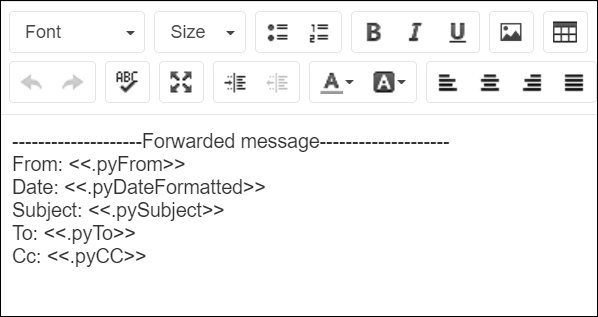Paragraphs
Paragraphs store long-form formatted text that you can reuse throughout your UI in various read-only contexts, such as correspondence rules and user forms. By relying on paragraph rules for repetitive text, you reduce maintenance efforts and encourage a single-source approach to content in your application.
Sample paragraph rule
Pega Platform includes an out-of-the-box pyForwardMessageHeader paragraph rule that contains a header that lists information about the original sender of a forwarded email. If you want an email in your application to include this header, you do not have to write the text manually. Instead, you can reference the pyForwardMessageHeader paragraph in your correspondence rule.
A paragraph rule can also include linked property references to objects in the application. The reference format uses the standard property dot notation. For example, the pyForwardMessageHeader rule references the sender of the original information by linking to the .PyFrom property.

References
You can reference paragraph rules from the following components:
- Sections
- Correspondence rules
- Correspondence fragment rules
- HTML rules
- XML rules
Sections reference paragraphs from the paragraph control. Correspondence rules, correspondence fragment rules, HTML rules, and XML rules can reference paragraph rules through the <pega:include> JSP tag.
- Creating paragraph rules
Improve the maintainability of your application by creating a single source for crucial application text. By using a paragraph control or directly referencing a paragraph rule, you can add long-form rich text to your interface. Paragraphs contain up to 1,000 characters of rich text, which you can reuse in many contexts in your application.
Previous topic Enabling adding words to the spell checker dictionary Next topic Creating paragraph rules
